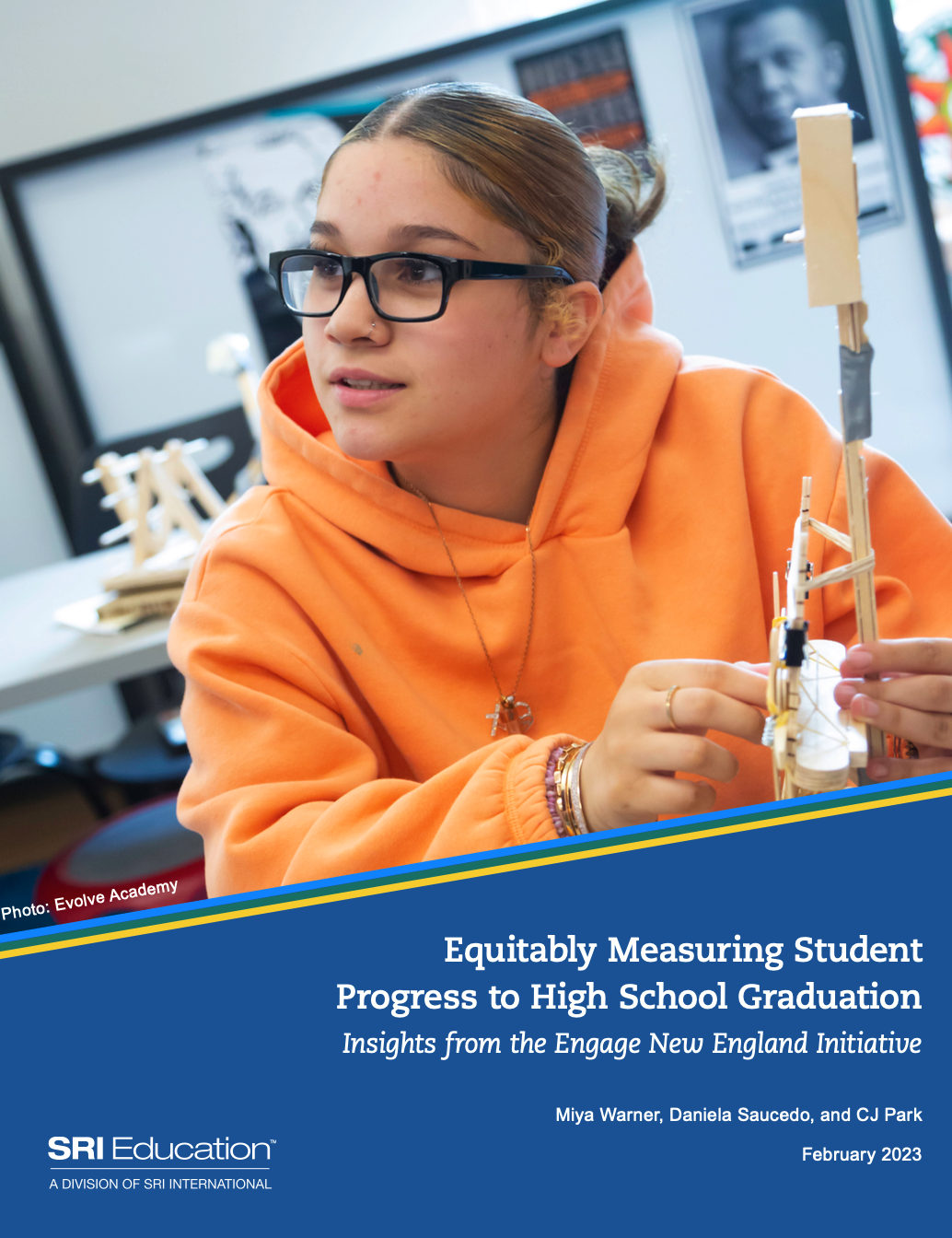
Equitably Measuring Student Progress to Graduation: Insights from the Engage New England Initiative
Traditional metrics for tracking progress toward graduation can obscure the progress of those students least well served by the education system who end up off track to graduate in 4 years, and they can even disincentivize educators from focusing on these students. In alternative high schools, which tend to serve ...
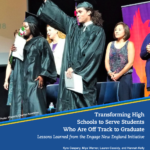
Transforming High Schools to Serve Students Who Are Off Track to Graduate
The Barr Foundation’s Engage New England (ENE) initiative was an effort to catalyze high school innovation by developing exemplary schools that support the success of students who are off track to graduate. Grounded in the tenets of positive youth development, the ENE initiative provided grants and technical assistance to support ...
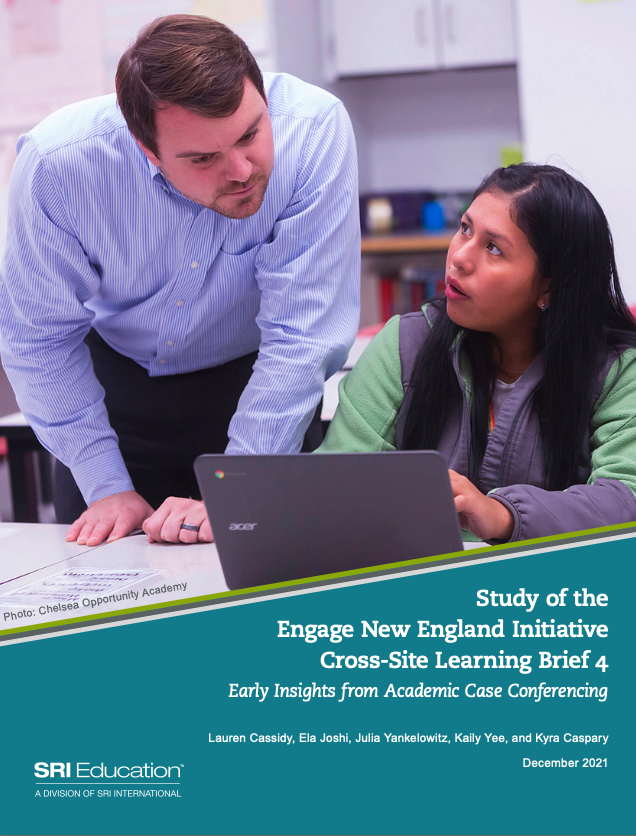
Study of the Engage New England Initiative Cross-Site Learning Brief 4: Early Insights from Academic Case Conferencing
This brief describes the approaches Engage New England (ENE) schools used to support academic case conferencing and their implementation of key practices ...

Study of the Engage New England Initiative Cross-Site Learning Brief 3: Improving Instructional Systems
This brief describes common facilitators and challenges experienced by Engage New England (ENE) grantees as they worked to further their instructional systems. It also provides some promising practices that grantees used to support these efforts or to address challenges ...
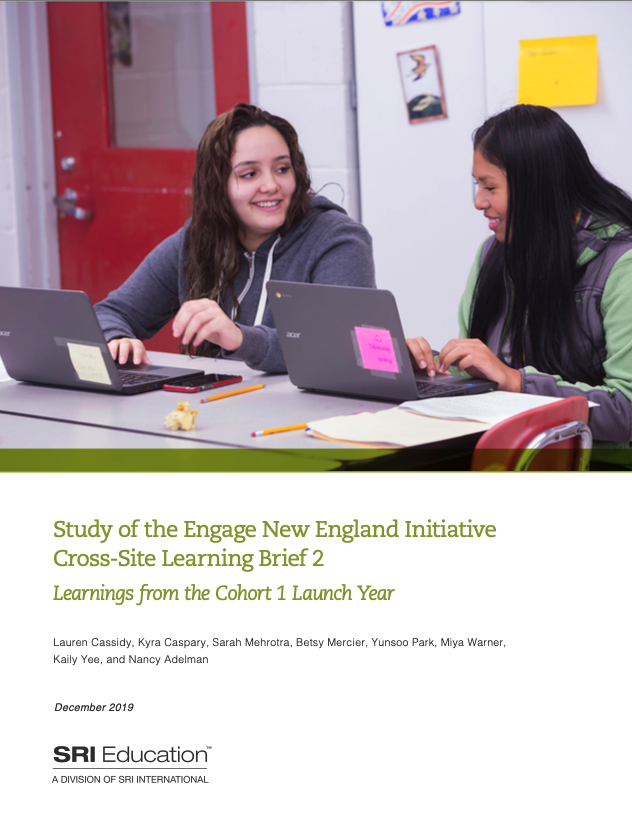
Study of the Engage New England Initiative Cross-Site Learning Brief 2: Learnings from the Cohort 1 Launch Year
This brief presents the lessons learned and common themes across Engage New England (ENE) grantees, as well as implications for planning and implementation that may be useful for subsequent cohorts of ENE grantees as they prepare to launch their programs or schools ...
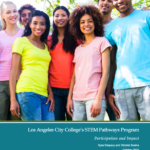
Los Angeles City College’s STEM Pathways Program: Participation and Impact
Los Angeles City College launched the STEM Pathways program in 2016 to improve STEM degree completion and transfer to 4-year colleges, particularly for low-income and Latinx students. With funding from the U.S. Department of Education, the program offered a variety of supports including Supplemental Instruction (SI), peer tutoring in STEM, ...
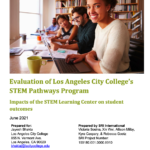
Evaluation of Los Angeles City College’s STEM Pathways Program: Impacts of the STEM Learning Center on student outcomes
Los Angeles City College launched the STEM Pathways program in 2016 with funding from the U.S. Department of Education. The intent of the STEM Pathways program was to improve STEM degree completion and transfer to 4-year colleges, particularly for low-income and Latinx students, through a variety of supports. The STEM ...
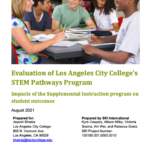
Evaluation of Los Angeles City College’s STEM Pathways Program: Impacts of the Supplemental Instruction program on student outcomes
Los Angeles City College launched the STEM Pathways program in 2016 with funding from the U.S. Department of Education. The intent of the STEM Pathways program was to improve STEM degree completion and transfer to 4-year colleges, particularly for low-income and Latinx students. The program provided a variety of supports ...

Evaluation of Los Angeles City College’s STEM Pathways Program: Impacts of STEM Pathways program participation on student outcomes
Los Angeles City College launched the STEM Pathways program in 2016 with funding from the U.S. Department of Education. The intent of the STEM Pathways program was to improve STEM degree completion and transfer to 4-year colleges, particularly for low-income and Latinx students. The program offered a variety of supports ...
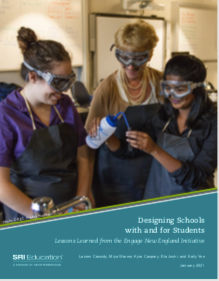
Designing Schools with and for Students
This research brief identifies promising strategies for embracing student voice in school design based on the experience of Engage New England (ENE) grantees. Successfully engaging students in decision-making and school design is not as simple as inviting them to attend staff meetings. As ENE grantees learned, meaningfully engaging students requires ...

Evaluation of the Oakland Health Pathways Project: Final Report
This final evaluation report presents findings from the Oakland Health Pathways Project (OHPP), a joint initiative of Oakland Unified School District (OUSD), Alameda Health System, and Alameda County Health Care Services Agency. The initiative is designed to improve educational and long-term employment outcomes for youth of color in Oakland (Alameda ...
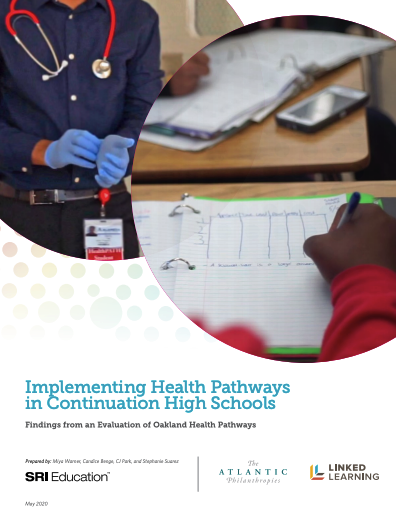
Implementing Health Pathways in Continuation High Schools: Findings from an Evaluation of Oakland Health Pathways
This brief presents findings from the Oakland Health Pathways Project (OHPP), a joint initiative of Oakland Unified School District, Alameda Health System, and Alameda County Health Care Services Agency. The initiative is designed to improve educational and long-term employment outcomes for youth of color in Oakland (Alameda County), California, while ...
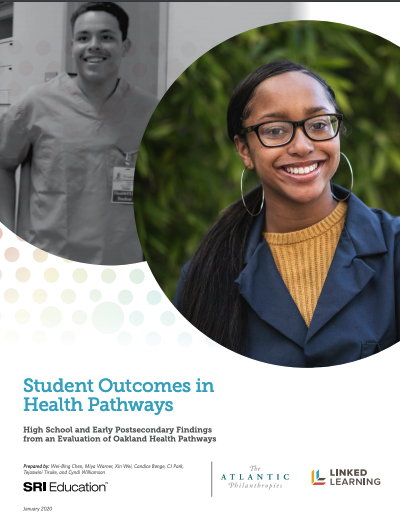
Student Outcomes in Health Pathways: High School and Early Postsecondary Findings from an Evaluation of Oakland Health Pathways
This brief presents findings from the Oakland Health Pathways Project (OHPP), a joint initiative of Oakland Unified School District, Alameda Health System, and Alameda County Health Care Services Agency. The initiative is designed to improve educational and long-term employment outcomes for youth of color in Oakland (Alameda County), California, while ...

Student Experiences in Health Pathways: Findings from an Evaluation of Oakland Health Pathways
This brief presents findings from an evaluation of the Oakland Health Pathways Project (OHPP), a joint initiative of Oakland Unified School District (OUSD), Alameda Health System (AHS), and Alameda County Health Care Services Agency (ACHCSA). OUSD applies Linked Learning, an approach to college and career preparation that combines classroom learning ...
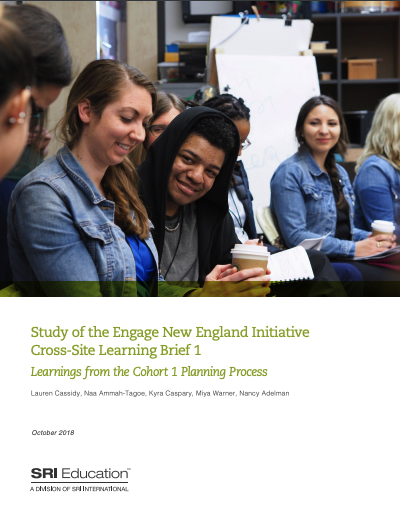
Study of the Engage New England Initiative Cross-Site Learning Brief 1: Learnings from the Cohort 1 Planning Process
This brief is designed to benefit all three cohorts of Engage New England (ENE) grantees as they plan and build their schools and to highlight key elements of planning for innovative school models ...
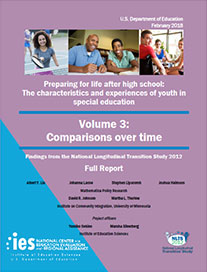
Preparing for Life after High School: The Characteristics and Experiences of Youth in Special Education. Findings from the National Longitudinal Transition Study 2012. Volume 3: Comparisons Over Time
The third report volume from the National Longitudinal Transition Study 2012 (NLTS 2012) presents information on the changes over time in the characteristics and high school experiences of secondary students participating in special education. NLTS 2012 is part of the congressionally-mandated National Assessment of the Individuals with Disabilities Education Act ...

Linked Learning Student Outcomes: Summary of Effects on High School and Early Postsecondary Education
This research brief summarizes student outcome findings from SRI International’s evaluation of the California Linked Learning District Initiative, an effort to build robust district-level systems to sustain high school career pathways in nine school districts in the state. With funding from The James Irvine Foundation, SRI conducted a rigorous multimethod ...
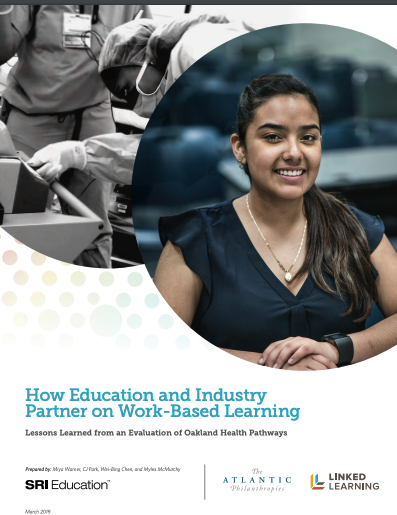
How Education and Industry Partner on Work-Based Learning: Lessons Learned from an Evaluation of Oakland Health Pathways
This brief presents findings from the Oakland Health Pathways Project (OHPP), a joint initiative of Oakland Unified School District, Alameda Health System, and Alameda County Health Care Services Agency. The initiative is designed to improve educational and long-term employment outcomes for youth of color in Oakland (Alameda County), California, while ...
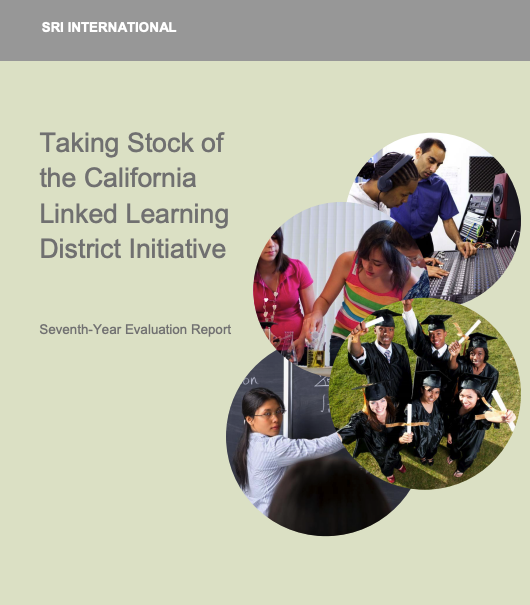
Taking Stock of the California Linked Learning District Initiative: Seventh-Year Evaluation Report
This report from SRI International’s multiyear evaluation of the California Linked Learning District Initiative is the first to include postsecondary outcomes for students in Linked Learning pathways and confirms many of the promising findings from previous years. Compared with similar peers in traditional high school programs, students participating in certified ...

Participant Experiences and Financial Impacts: Findings from Year 2 of Achieving the Dream’s OER Degree Initiative
Findings from Achieving the Dream’s Open Education Resources (OER) Degree Initiative, which helps colleges reduce the financial burden on students by developing course pathways using free and openly licensed instructional materials ...

Access & Equity in Linked Learning: A Report on Pathway Access and Academic Outcomes for Traditionally Underserved Students
This brief describes the successes and challenges the districts have experienced in fostering access and equity in Linked Learning pathways, examining five groups of students frequently underserved by traditional schools: students with low prior achievement, English learners, African-American students, Latino students, and female students. Throughout the evaluation and in this ...
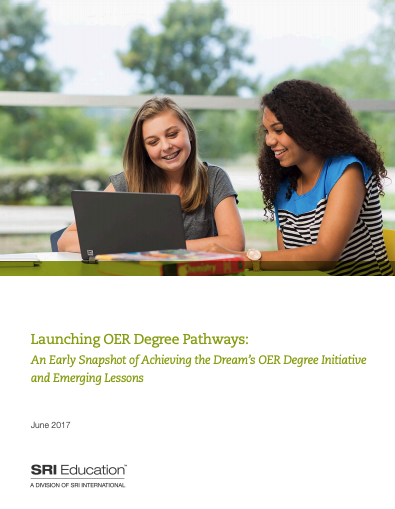
Launching OER Degree Pathways: An Early Snapshot of Achieving the Dream’s OER Degree Initiative and Emerging Lessons
The Open Educational Resources (OER) Degree Initiative, led by Achieving the Dream (ATD), seeks to boost college access and student success by supporting the redesign of courses needed for a degree using OER in place of proprietary instructional materials. ATD’s programs aim to help community colleges throughout the United States ...

Evaluating Digital Learning for Adult Basic Literacy and Numeracy
More than 36 million adults in the United States do not have the basic literacy and math skills needed for many entry-level jobs and even less so for the types of jobs expected to dominate in the future. And current federal- and state-funded adult basic education (ABE) programs, the main ...

What it Takes to Create Linked Learning: A Report on Lessons Learned from Evaluating the Approach in Practice
Linked Learning is an approach for transforming high schools to prepare all students for college, career, and life. It works through career-themed pathways that integrate college preparatory academics, rigorous technical training, work-based learning, and supports to help students stay on track. With support from The James Irvine Foundation, SRI International ...
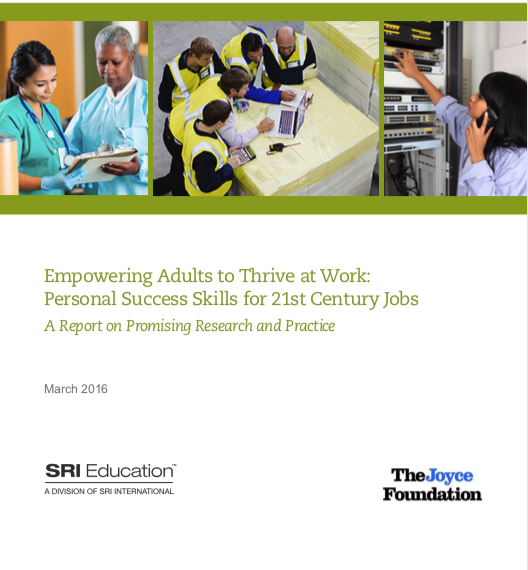
Empowering Adults to Thrive at Work: Personal Success Skills for 21st Century Jobs. A Report on Promising Research and Practice
This report is geared toward leaders in education, industry, workforce development, and human services interested empowering working age adults to build sustainable 21st century careers. Personal success skills are the foundational capacities that all adults need to thrive in the workforce, beyond technical and disciplinary knowledge. As part of a ...
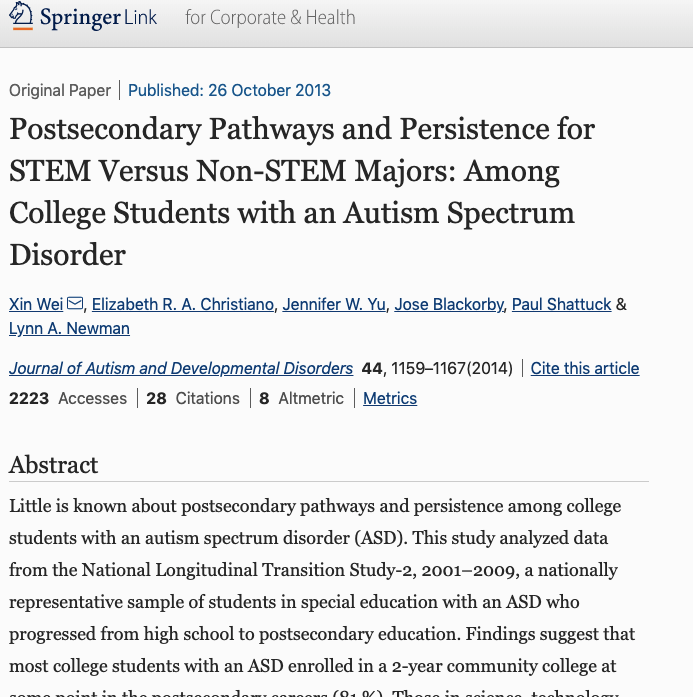
Postsecondary Pathways and Persistence Among College Students with an Autism Spectrum Disorder
Little is known about postsecondary pathways and persistence among college students with an autism spectrum disorder (ASD). This study analyzed data from the National Longitudinal Transition Study-2, 2001–2009, a nationally representative sample of students in special education with an ASD who progressed from high school to postsecondary education. Findings suggest ...
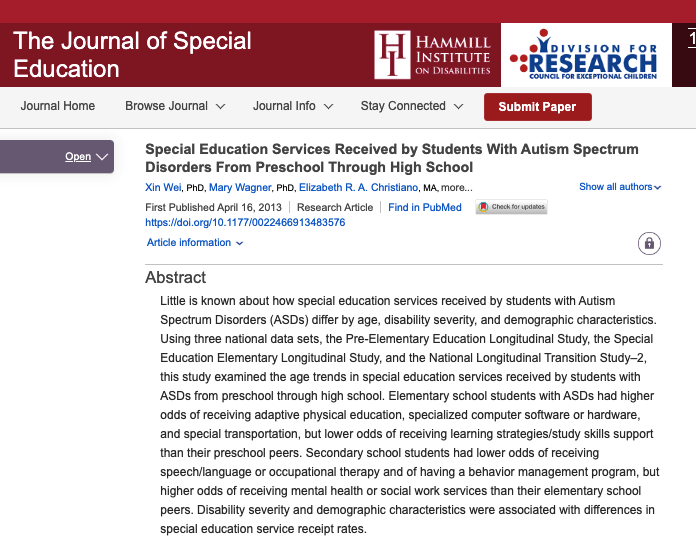
Special Education Services Received by Students with Autism Spectrum Disorders from Preschool Through High School
Little is known about how special education services received by students with Autism Spectrum Disorders (ASDs) differ by age, disability severity, and demographic characteristics. Using three national data sets, the Pre-Elementary Education Longitudinal Study, the Special Education Elementary Longitudinal Study, and the National Longitudinal Transition Study–2, this study examined the ...

A Review of the Bill & Melinda Gates Foundation Postsecondary Success Portfolio: Lessons from Five Years of Funding Digital Courseware
The Bill & Melinda Gates Foundation’s Postsecondary Success initiative seeks to understand what is required for technology applications to produce positive student impacts at scale. SRI analyzed the features of 137 different courses from 12 major postsecondary courseware-related projects and performed a quantitative meta-analysis of student outcomes to estimate the ...
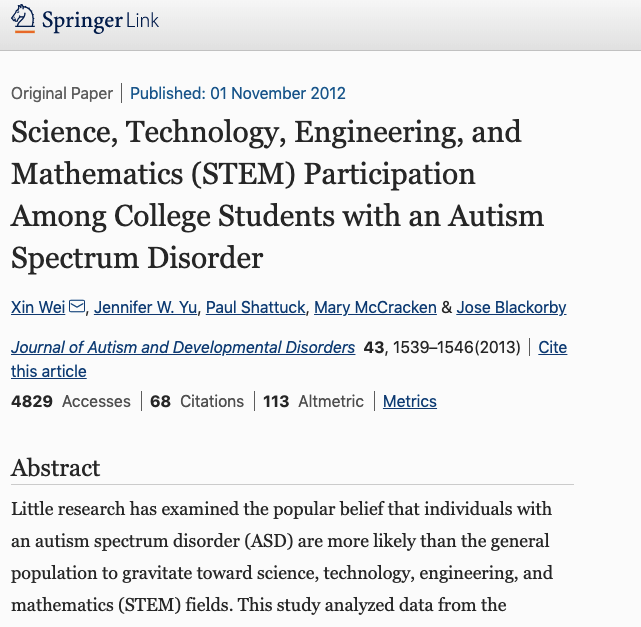
Science, Technology, Engineering, and Mathematics (STEM) Participation Among College Students with an Autism Spectrum Disorder
Little research has examined the popular belief that individuals with an autism spectrum disorder (ASD) are more likely than the general population to gravitate toward science, technology, engineering, and mathematics (STEM) fields. This study analyzed data from the National Longitudinal Transition Study-2, a nationally representative sample of students with an ...
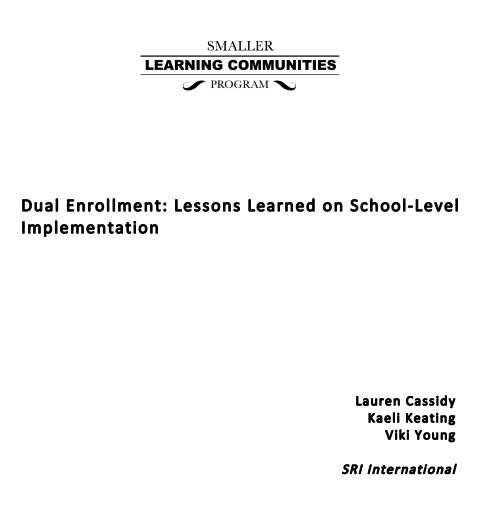
Dual Enrollment: Lessons Learned on School‐Level Implementation
Accelerated learning opportunities are becoming increasingly common strategies to promote high school graduation and encourage college enrollment. Through mechanisms such as Dual Enrollment, Advanced Placement (AP), and International Baccalaureate (IB) courses, students get a head start on earning college credit while still in high school. The goals for enrolling students ...
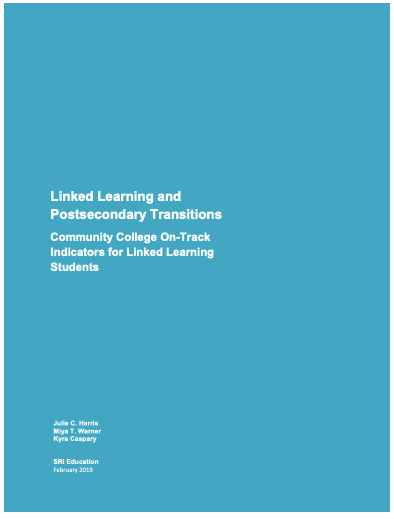
Community College On-Track Indicators for Linked Learning Students
The rapidly expanding Linked Learning approach blends career technical and college preparatory course sequence in a single high school pathway, representing the convergence of two strands of high school reform from the past thirty years. Using data from nine California districts, we examine the effect of high school Linked Learning ...
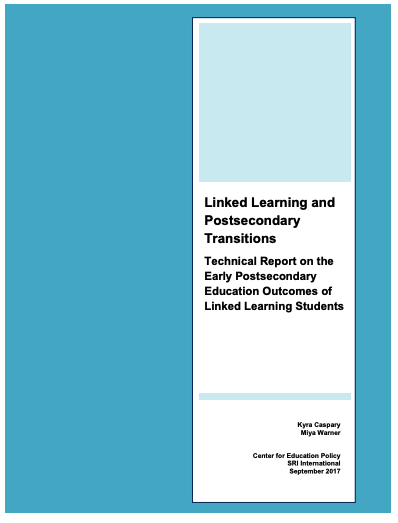
Linked Learning and Postsecondary Transitions: A Report on the Early Postsecondary Education Outcomes of Linked Learning Students
This research brief compares the postsecondary outcomes of students in certified Linked Learning pathways with those of peers with similar demographic characteristics and prior achievement in traditional high school programs. Certified pathways are those deemed to have met established quality standards through an external review. We found that Linked Learning ...
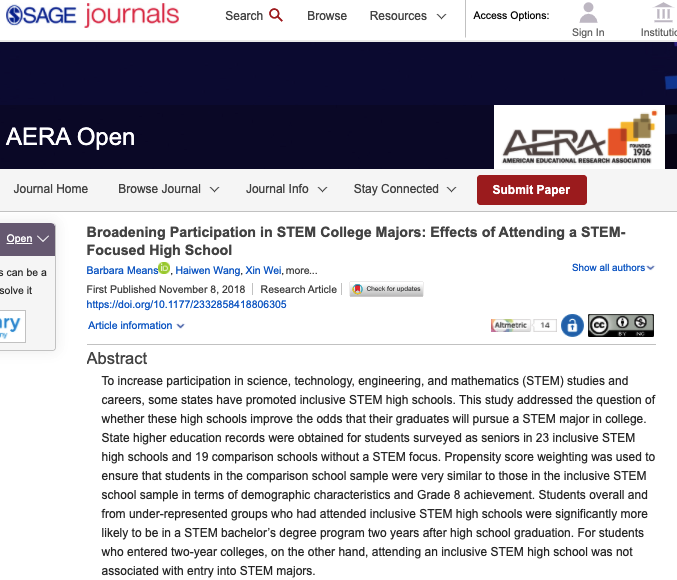
Broadening Participation in STEM College Majors: Effects of Attending a STEM-Focused High School
To increase participation in science, technology, engineering, and mathematics (STEM) studies and careers, some states have promoted inclusive STEM high schools. This study addressed the question of whether these high schools improve the odds that their graduates will pursue a STEM major in college. State higher education records were obtained ...
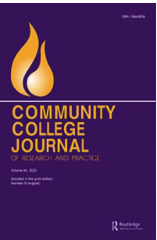
A framework for evaluating implementation of community college workforce education partnerships and programs
This article presents two contrasting cases that represent the predominant approaches to engaging employers in workforce education programming: large-scale partnership and employer outreach. Project: Community College Partnership’s Instructional Impacts Download: Journal Article (PDF) Citation Yarnall, L., Tennant, L., & Stites, R. (2016). A framework for evaluating implementation of community college ...

International Baccalaureate National Trends for Low-income Students 2008–2014
Given the importance of college for employment and social mobility, policymakers and education leaders are attempting to strengthen the pipeline from high school completion through graduation from a postsecondary institution. The purpose of this research is to examine that pipeline for lowincome International Baccalaureate (IB) Diploma Programme (DP) students. The ...

Meeting 2020 Workforce Goals: The Role of Industry–College Collaboration and Goals for Instructional Design
Since the 1990s, federal programs for workforce training have aimed to transform the role of community colleges from narrow contract training to a broader role that encompasses strategic instructional program planning and innovation to support lifelong learning for a changing workforce and economic development. Yet, to date, there has been ...
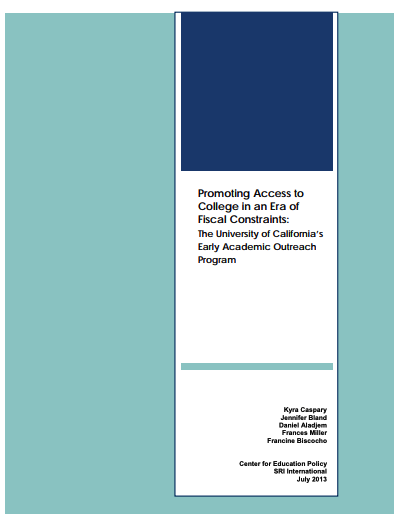
Promoting Access to College in an Era of Fiscal Constraints: The University of California’s Early Academic Outreach Program
The University of California (UC) established the Early Academic Outreach Program (EAOP) in 1976 to improve access to UC for students from underserved schools, targeting low-income, first-generation college, and minority students who have traditionally been underrepresented in postsecondary education. This report assesses the current status and success of the EAOP ...
